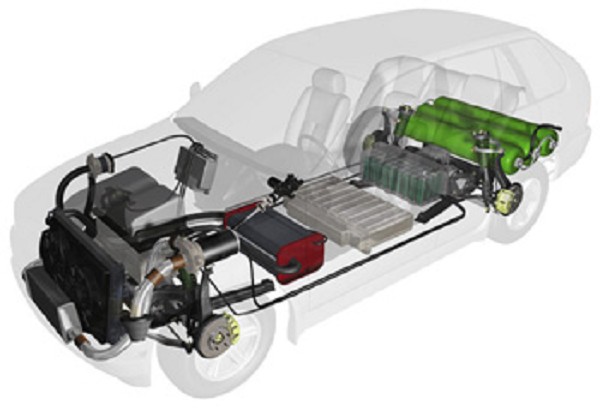MPG OBSOLETE? EPA Moving from Regulating Fuel Economy to Greenhouse Gases
Natural Gas, Hydrogen Driven Vehicles May Be in Your Rear View Mirror
June 27, 2013
By: Dave Rogers
 Cutaway model of hydrogen car designed by the Houston Texas Advanced Researchers.
Cutaway model of hydrogen car designed by the Houston Texas Advanced Researchers.
What's your GHG? (greenhouse gas emission)
Soon drivers will be asking that of car dealers, instead of the old-fashioned MPG (miles per gallon).
The new standard may change the type of cars most people drive.
Natural gas or hydrogen driven vehicles may soon become the hottest thing on the market.
Michigan entrepreneurs who have a hydrogen driven engine in the approval stages may find acceptance. The Detroit area group has found a way to make the hydrogen tank non-explosive, but details so far remain hush-hush.
The EPA (Environmental Protection Agency) seems to be taking the reins on automotive regulation from the NHTSA (National Highway Traffic Safety Administration).
New regulation priorities will alter the way the auto industry must respond to increased fuel economy -- greenhouse gases (GHG), states the Center for Automotive Research (CAR) in Ann Arbor.
CAR is actively researching and analyzing fuel consumption/GHG emissions regulation challenges. It will be a key topic during the Advanced Powertrain Forum (Tuesday August 6) at the CAR Management Briefing Seminars in Traverse City.
Also, CAR is working with several key stakeholders to develop a natural gas vehicle study. The goal of this study is to articulate the potential of the NGV sector and the many factors which could enable or inhibit its sustained growth.
Ford Motor Company recently introduced the P2000, a new car with a hydrogen internal combustion engine (ICE) that "could help bridge the gap between gasoline vehicles and the fuel cell vehicles of the future," according to Planetforlife.com.
"The engine is not much different from an ordinary gasoline engine. The use of hydrogen greatly reduces emissions although nitrous oxides are still a problem. Engine efficiency about equals a diesel, about 35 percent. The hydrogen is stored in a tank that is rated at 240 atmospheres (240 bars). The range is only 62 miles. Ford does not give the price of the P2000, but it should be inexpensive given that all of the components are rather ordinary."
A Supreme Court ruling in 2007 gave the Environmental Protection Agency (EPA) the ability to regulate emissions from vehicles. Although much was made of the announcement at the time, its true importance may not be realized until April 2018.
Business Insider has a special report on FCEVs (Fuel Cell Electric Vehicles) that run on hydrogen gas and oxygen, which an onboard fuel cell stack converts, via a chemical reaction, into electricity.
Read more: http://www.businessinsider.com/pro-con-future-of-hydrogen-fuel-cell-electric-vehicles-fcev-2013-4#ixzz2XQYGssjnBusiness Insider reports
Honda and Hyundai also have recent entries in the FCEV arena.
The U.S. Government is subtly moving from a fuel economy driven standard (CAFE) to GHG based requirements. CAFE is intended to reduce oil consumption and is regulated by NHTSA; however, limiting GHG emissions is EPAs domain.
The EPA is intent on moving the national discussion from miles per gallon to GHG grams per mile. The two measures are sometimes compatible -- and sometimes not. For example, because of differing carbon content among the alternative fuels, those fuels will emit differing GHG levels.
Although there has been an attempt to harmonize, there are differences between how alternative fuels are viewed by EPA and CAFE. Interpretation of those differences will likely lead to differing strategies among competitors.
EPA has set GHG standards through 2025 -- with the expectation they will continue after 2025.
NHTSA has set fuel economy standards for 2017-2021, with a review set for later this decade. In accordance with the current regulation a final decision on the review is due no later than April 2018.
If alterations are to be made, NHTSA (with significant contribution from EPA) will then begin the process of proposing a new CAFE rule. Any alterations to CAFE could (but not necessarily must) lead EPA to harmonize their GHG regulation to the new fuel economy standards.
Automotive industry observers refer to this review as the "off-ramp." The implication is this review will be used to lessen the stringency of the standards.
However, some note that EPA, NHTSA, CARB and many other stakeholders view this differently -- some even suggesting it is an "on-ramp" for tightening the restrictions.
While this is about CAFE, it is clear EPA will be an integral part (even the driving force) of the assessment.
###